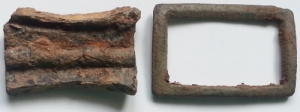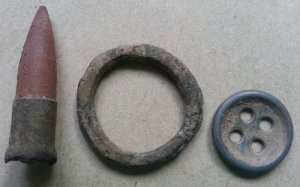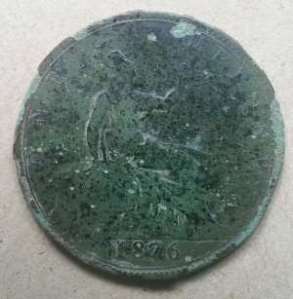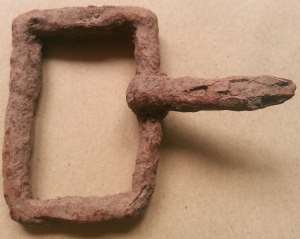Yesterday I decided to detect up the line of the old road, as close as I could get to it.
My hypothesis with this permission has always been that people in the past were no different from modern motorists and were happy to chuck rubbish out of their cart along the road side as they passed; but also that travellers in times past, moving as they did on foot, horseback or by cart, were much more likely to stop by the roadside or pull off for a rest, so there should be random lost or thrown-away stuff along the old road margins to be found. Nice idea, eh?
Needless to say it didn’t work out that way. I detected right along the edge of the road, up gently rising ground to the field boundary, beyond which lay a belt of trees and an open hill top. And found absolutely nothing except a couple of shotgun cartridges. Not a broken button, not even other rubbish. What’s going on, eh?
Out of curiosity I peered looked down through the foliage into the hollow way that was the old road. Bloody hell! At this point it was at least 10 feet deep, steep-sided and as dark as Hades down there. Talk about a place for an ambush! There wasn’t a cat in Hell’s chance of any traveller pulling off onto the roadside to rest his sweaty feet in the sun. Here be Dragons!
My hypothesis duly kyboshed, I spent a while detecting around the slopes of the hill. The ground was more highly mineralised in this area, the soil was rather heavy clay and the few holes I dug produced the odd piece of rubbish and bits of charcoal. Just charcoal, though. No brick, tile, glass or other evidence of habitation, and the few clumps of nettles nearby were up the slope from where I was digging.
For the last hour I made my way down the slope and across a flat part of the field. This produced a broken copper alloy buckle and what appears to be the remains of a hinge. The latter is not magnetic (according to my trusty fridge magnet) though there are traces of rust in a few places. I suppose I could throw it away, but that would make me unhinged.
Finds: 1 broken buckle and 1 broken hinge







